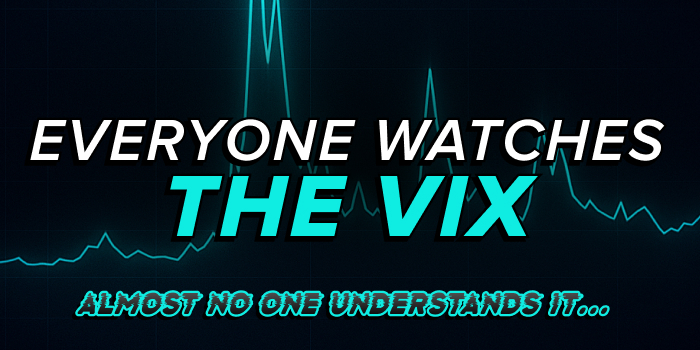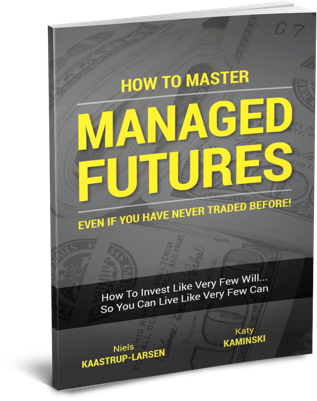Everyone Watches the VIX — Almost No One Understands It

- The VIX has long been seen as the market’s fear gauge, but in reality, it's a complex blend of positioning, speculation, and structural forces.
- The Cboe’s new decomposition tool breaks it all down, helping traders see what’s really moving the market.
- This framework equips market participants with insights that can sharpen their strategies and improve decision-making
Volatility has always been the market’s heartbeat. You can watch prices tick up and down all day, but the real pulse is hidden beneath the surface in how traders price risk. For decades, the VIX Index has been Wall Street’s go-to shorthand for that pulse. It’s usually called the “fear gauge,” a single number that supposedly captures how worried investors are about the future.
That nickname is catchy. It’s also incomplete.
The VIX is not merely a reflection of fear. It’s a blend of expectations, positioning, and hedging activity, all woven into the options market. Sometimes it moves higher because investors are scared of a sharp sell-off. Other times it climbs because traders are betting on a rally. Without a way to pull apart these influences, you are left with a blurry picture.
That is the problem Cboe’s new VIX decomposition tool aims to solve. By breaking the index into its core components, it offers traders and investors a much sharper view of what’s actually driving volatility.
Why the VIX Alone Can Be Misleading
On the surface, the VIX measures the market’s expectation of how much the S&P 500 will move over the next 30 days. The higher the number, the bigger the anticipated swings. Simple enough.
BUT… that number is an average of many moving parts. It blends together downside protection demand, upside speculation, and the natural mathematical effects of how options are priced. Without separating those factors, a spike in the VIX could be interpreted as panic when it’s actually something else entirely.
Consider a day when the S&P 500 jumps sharply. Common sense might tell you the VIX should fall because investors feel less fearful. Yet the opposite can happen if traders are scrambling to buy Call options to chase the rally. In that case, the VIX is rising because of demand for upside exposure, not because anyone is bracing for disaster.
This is why serious volatility traders have long wanted a way to break the index into its underlying drivers.
Breaking the VIX Into Pieces
The decomposition framework takes the VIX and dissects it into distinct building blocks:
- Expected move: How much of the change in the VIX comes simply from the S&P moving up or down along the existing volatility surface.
- Parallel shift: A broad repricing of options across strikes, often after a shock when traders raise premiums for both Puts and Calls.
- Skew: Differences in pricing between out-of-the-money Puts and Calls, which can reveal whether traders are leaning bearish or bullish.
- Convexity: Pricing changes in deep out-of-the-money options, which often show demand for protection against extreme moves.
With these pieces, you can answer questions like: Is the VIX rising because people want downside hedges? Because they are buying upside? Or because option sellers are lifting premiums across the board after a shock? The answers can change how you trade, hedge, or even interpret the broader market mood.
Positioning Matters More Than You Think
Markets are not only about fundamentals. They are about positioning. Who owns what, who is short, and who is desperate to get out of a trade can all drive prices in ways that have little to do with economic data or corporate earnings.
The VIX decomposition tool can expose these positioning dynamics. For example, in some sell-offs, the VIX barely budges because traders were already heavily hedged. When bad news hits, there is no rush to buy protection, so volatility stays muted. In other cases, an unexpected shock forces investors to scramble for options, sending the VIX soaring even if the underlying decline is modest.
This is where volatility becomes reflexive. Large shifts in option positioning can push the S&P itself higher or lower as dealers hedge their books. If dealers are short Calls, they may have to buy stocks as prices rise, fueling the rally. If they are short Puts, they may have to sell as prices drop, accelerating the decline. Watching the volatility surface is one of the most effective ways to detect these forces.
Lessons From History
History offers plenty of examples where understanding volatility’s drivers mattered more than the headline number.
Take the 2015 yuan devaluation. The surprise move by China triggered a sharp but short-lived spike in volatility. Option demand surged across the board because the event was unexpected, catching traders off guard.
Then there was “Volmageddon,” the February 2018 spike in volatility that wiped out short volatility strategies. Volatility-linked products magnified losses and forced massive covering of short volatility positions. The VIX spiked on positioning, not on a deep market decline.
More recently was the 2022 bear market. Despite a ~27 percent peak-to-trough drop in the S&P 500, the VIX stayed relatively calm because investors had already positioned themselves for bad news. And, in several cases since then, the VIX has risen during strong equity rallies because traders piled into calls, driving up option premiums.
In each case, a decomposition would have shown whether the driver was downside fear, upside speculation, or a mechanical shift in the volatility surface.
The Zero-DTE Factor
One of the biggest changes in recent years is the explosive growth of zero-day-to-expiration (0DTE) options. These contracts, which expire the same day they are traded, now account for roughly 60 percent of SPX option volume.
0DTE options are cheap, flexible, and popular with a wide range of traders. Some use them for short-term directional bets. Others sell them systematically to generate income. Because they settle so quickly, they can simplify certain volatility plays and allow traders to express very specific views about where the market will close today.
Far from being just a speculative tool, 0DTE options can help market makers manage risk and provide liquidity in longer-dated contracts. Their growth adds another layer to understanding volatility, since large flows in same-day options can ripple through the broader options market.
Why This Matters for Traders and Investors
For a long time, volatility analysis was about reading one number and making a judgment call. The VIX was high, so fear must be elevated. The VIX was low, so complacency must be setting in.
That kind of binary thinking is not enough anymore. With the ability to break the VIX into its components, you can tailor your strategy to the actual forces at work.
If the spike is coming from downside put demand, hedges might be expensive, and you might look for alternatives. If it’s driven by upside call buying, that could be a sign of speculative froth or a potential short squeeze. If the entire volatility surface is lifting after a shock, you might expect elevated premiums to persist for a while.
The right interpretation can mean the difference between putting on a winning hedge and wasting money on protection you did not need.
Looking Ahead
The Cboe plans to make the VIX decomposition tool available for regular use, along with historical snapshots of past volatility events. Having real-time and historical context will allow traders to see patterns and anticipate how the market might react under similar conditions.
For those who trade volatility directly, the benefits are obvious. For long-term investors, the insights are still valuable. Knowing whether volatility is being driven by structural positioning, macroeconomic shocks, or speculative activity can help you decide when to stay the course and when to prepare for turbulence.
Final Thought
Howard Marks often writes about the importance of “second-level thinking” in investing. Morgan Housel reminds us that markets are driven by people’s behavior as much as by fundamentals. The VIX decomposition tool is a way to bring that second-level thinking into volatility analysis. It moves you beyond the headline number and into the deeper forces shaping market risk.
Volatility will always be part of the market’s heartbeat. Now there is a better way to listen.
This is based on an episode of Top Traders Unplugged, a bi-weekly podcast with the most interesting and experienced investors, economists, traders and thought leaders in the world. Sign up for our Newsletter or subscribe on your preferred podcast platform so that you don't miss out on future episodes.
Most Comprehensive Guide to the Best Investment Books of All Time

Most Comprehensive Guide to the Best Investment Books of All Time
Get the most comprehensive guide to over 500 of the BEST investment books, with insights, and learn from some of the wisest and most accomplished investors in the world. A collection of MUST READ books carefully selected for you. Get it now absolutely FREE!
Get Your FREE Guide HERE!




